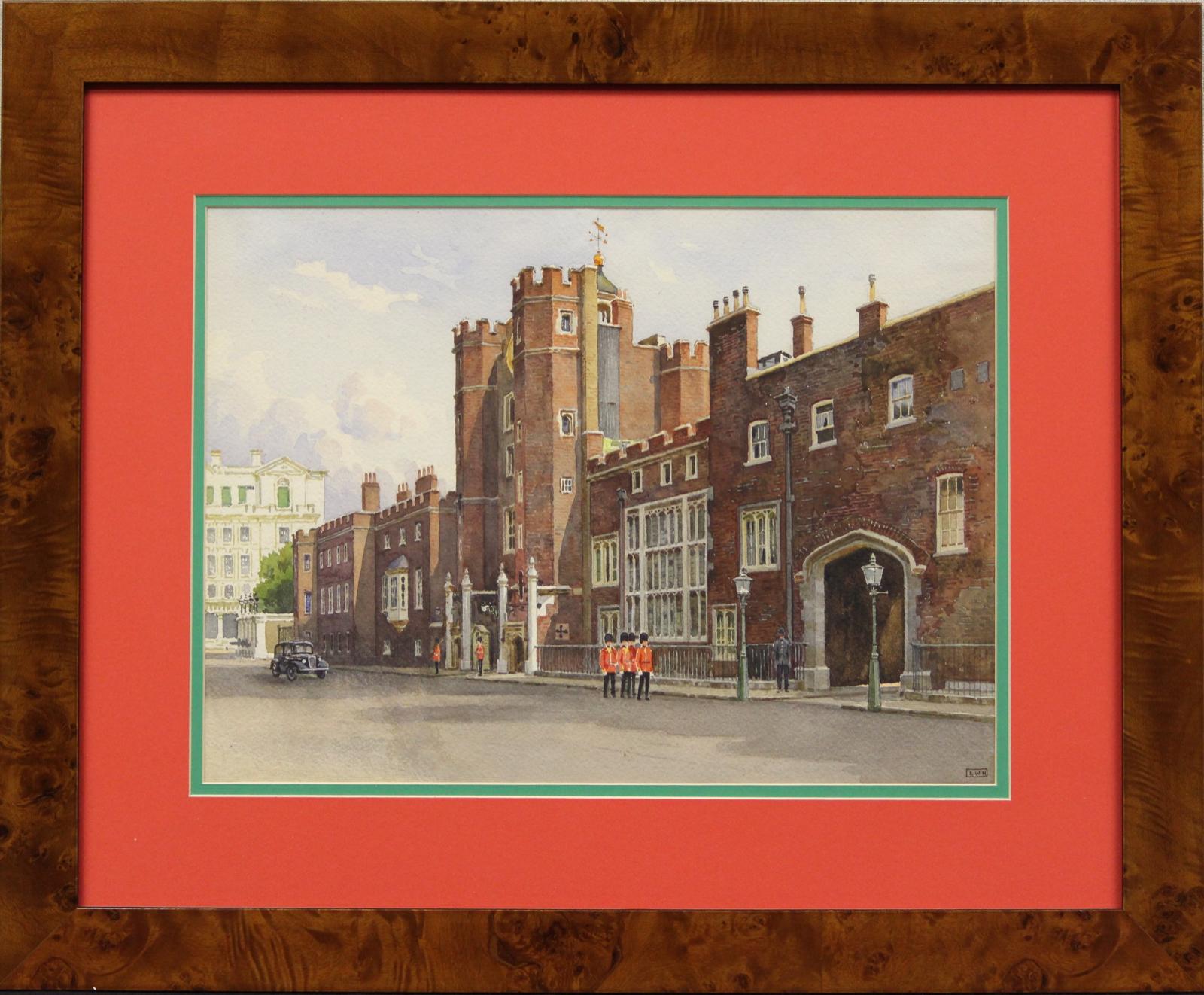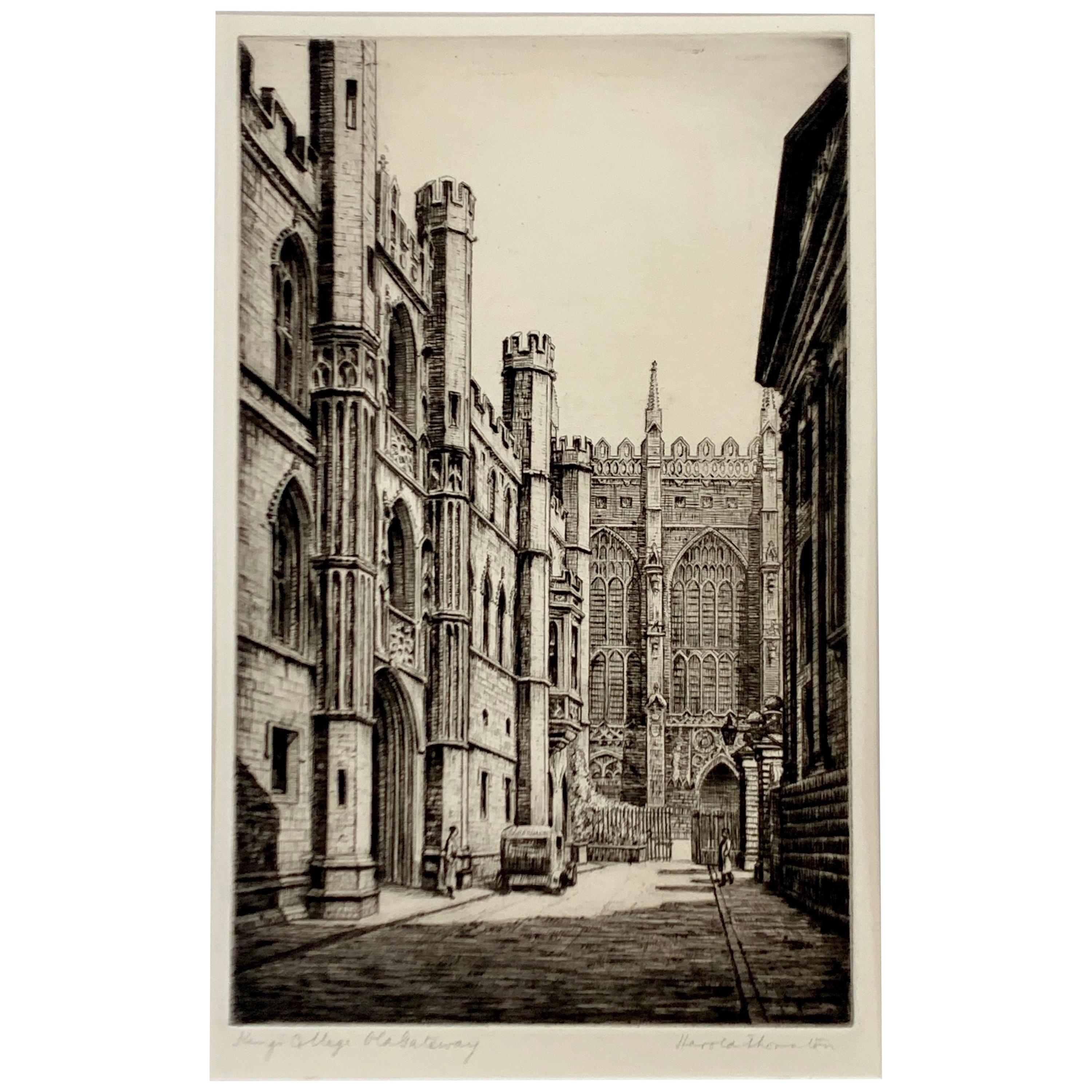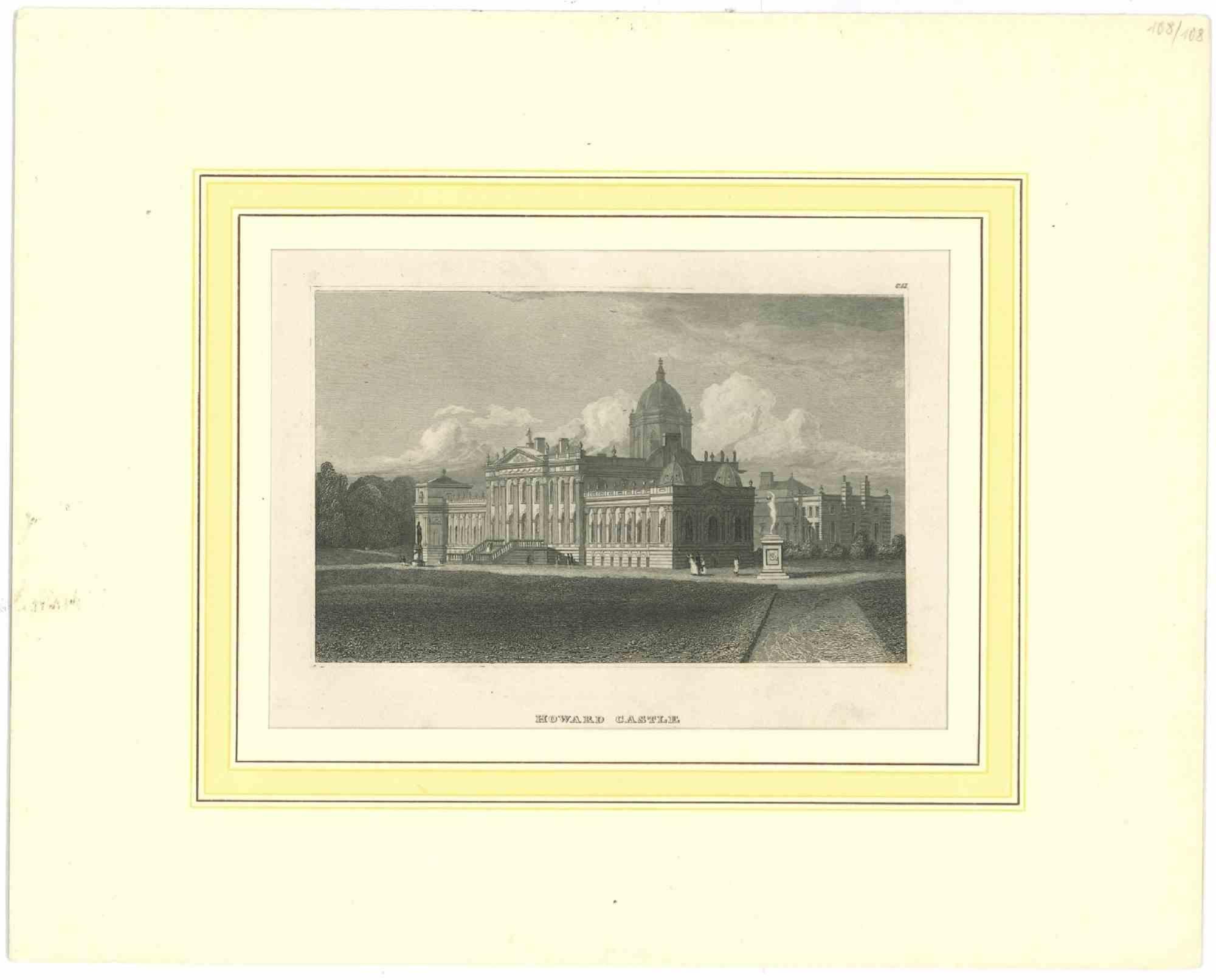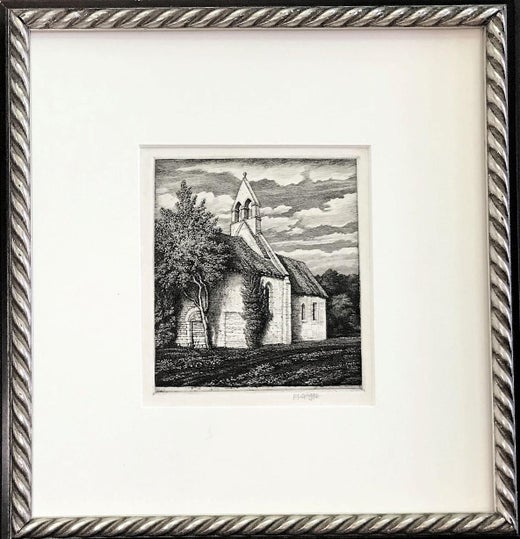Items Similar to Palace Court
Want more images or videos?
Request additional images or videos from the seller
1 of 2
Frederick Landseer Griggs, R.A., R.E.Palace Court1933
1933
$2,250
£1,691.82
€1,964.61
CA$3,142.08
A$3,484.80
CHF 1,830.04
MX$42,795.78
NOK 23,166.63
SEK 21,846.44
DKK 14,658.17
Shipping
Retrieving quote...The 1stDibs Promise:
Authenticity Guarantee,
Money-Back Guarantee,
24-Hour Cancellation
About the Item
Frederick Landseer Griggs (1876-1938), Palace Court, 1933, etching, signed and inscribed in pencil. Reference: Comstock 49, third state (of 3), from the printing of about 75. In excellent condition, printed in a warm brownish/black ink on a cream laid paper with a “letters in a row” watermark.
Special presentation proof impression, dedicated in pencil by F.L.Griggs “To my friend H.J.F. Badeley”. Badeley was an accomplished original printmaker famed especially for his exquisitely engraved bookplates.
A fine impression.
In the first state (only 2 proofs) figures were yet to be etched, and in the lower margin was a dedication to Mary Anderson deNavarro, a American Shakespearean actor. In the second state (only 3 proofs) the group of figures in Tudor costume was added (13 figures plus a ghostly outline of a figure to the left of the group which appears to have been burnished out), the flagstaff and weathervane were added as well as the pigeons over the roof at the left. In the third state the bottom margin containing the dedication was cut off.
In a 1933 letter to Campbell Dodgson, Griggs wrote that this imaginary subject was “a kind of essay on East Anglican building – of mediaeval kinds, of course.”
- Creator:Frederick Landseer Griggs, R.A., R.E. (1876 - 1938, British)
- Creation Year:1933
- Medium:
- Movement & Style:
- Period:
- Condition:
- Gallery Location:New York, NY
- Reference Number:1stDibs: LU51531576853
Frederick Landseer Griggs, R.A., R.E.
Frederick Maur Landseer Griggs was born in Hitchin, Hertfordshire, in 1876. He studied at the Slade School of Art and worked for two years 1896-8 in the architectural office of C.E. Mallows, the architectural draughtsman. He worked in a visionary tradition deriving from William Blake, Samuel Palmer, and Edward Calvert. Griggs created 57 prints in all, depicting idealized Gothic buildings and landscapes. He was Master of the Art Workers' Guild, and one of the first etchers to be elected to full membership of the Royal Academy.
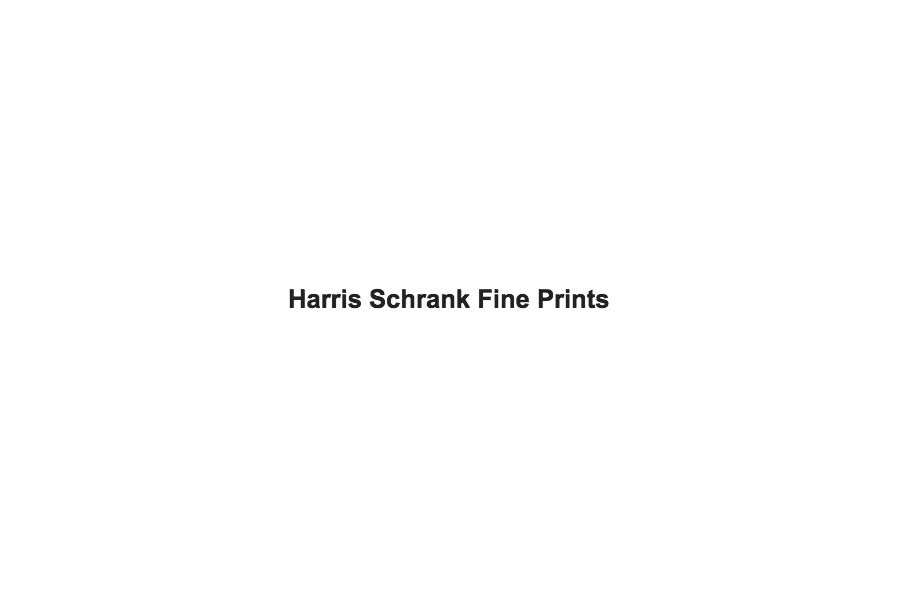
About the Seller
4.9
Recognized Seller
These prestigious sellers are industry leaders and represent the highest echelon for item quality and design.
Established in 2000
1stDibs seller since 2016
105 sales on 1stDibs
Associations
International Fine Print Dealers Association
- ShippingRetrieving quote...Shipping from: New York, NY
- Return Policy
Authenticity Guarantee
In the unlikely event there’s an issue with an item’s authenticity, contact us within 1 year for a full refund. DetailsMoney-Back Guarantee
If your item is not as described, is damaged in transit, or does not arrive, contact us within 7 days for a full refund. Details24-Hour Cancellation
You have a 24-hour grace period in which to reconsider your purchase, with no questions asked.Vetted Professional Sellers
Our world-class sellers must adhere to strict standards for service and quality, maintaining the integrity of our listings.Price-Match Guarantee
If you find that a seller listed the same item for a lower price elsewhere, we’ll match it.Trusted Global Delivery
Our best-in-class carrier network provides specialized shipping options worldwide, including custom delivery.More From This Seller
View AllKensington Gardens (The Small Plate)
By Sir Francis Seymour Haden, R.A.
Located in New York, NY
Sir Francis Seymour Haden (1818-1910), Kensington Gardens (The Small Plate), drypoint, 1859, signed in pencil lower right. References: Harrington 12...
Category
1850s Realist Landscape Prints
Materials
Drypoint
La Tour de L’Horloge (The Clock Tower, Paris)
By Charles Meryon
Located in New York, NY
Charles Meryon (1821-1868), La Tour de L’Horloge (The Clock Tower, Paris), 1852, etching with engraving. Reference: Schneiderman 23, Delteil 28. Third state (of 10). On very thin Jap...
Category
1850s Realist Landscape Prints
Materials
Engraving, Etching
Westminster Palace
By Félix Hilaire Buhot
Located in New York, NY
Felix Buhot (1847-1898), Westminster Palace, etching, drypoint, roulette, 1884, signed in pencil and extensively annotated. Bourcard/Goodfriend 155, Bourca...
Category
1880s Impressionist Landscape Prints
Materials
Drypoint, Etching
La Morgue
By Charles Meryon
Located in New York, NY
Charles Meryon 1821-1868), La Morgue, etching, 1854, fourth state (of 7), printed in brown/black ink, Schneiderman 42 [with the inscription, date, address in the plate]. In very goo...
Category
1850s Realist Landscape Prints
Materials
Etching
The Gate, Chelsea
By Theodore Casimir Roussel
Located in New York, NY
Theodore Roussel (1847-1926), The Gate, Chelsea; etching and drypoint, 1889-1890, signed on the tab and inscribed imp [also signed in the plate lowere right]. Reference: Hausberg 33, fourth state (of 4), from the total printing of about 43 impressions. In excellent condition, trimmed by the artist all around on the plate mark except for the tab, 8 1/8 x 6 1/2 inches.
A fine impression, printed on a light cream wove paper with plate tone (wiped to brighten the gate and doorway area) and substantial burr in the drypoint work.
According to Hausberg, “The gate and house behind it still stand today at No. 4 Cheyne Walk...
Category
1880s Impressionist Landscape Prints
Materials
Drypoint, Etching
Doorway of the Doges, Venice
By Donald Shaw MacLaughlan
Located in New York, NY
Donald Shaw MacLaughlin (1876-1938), Doorway of the Doges, Venice, etching with plate tone, 1909, signed bottom right [also signed and dated in the plate]. Reference: Marie Bruette 1...
Category
Early 1900s Realist Landscape Prints
Materials
Etching
You May Also Like
1804 St George's Chapel Windsor Castle print
By Frederick Nash
Located in London, GB
From a series of large and impressive prints of St George's Chapel, the location for the Royal Wedding of Prince Harry and Meghan Markle; to see some ...
Category
Early 1800s Realist Landscape Prints
Materials
Etching, Aquatint
1804 St George's Chapel Windsor Castle print
By Frederick Nash
Located in London, GB
From a series of large and impressive prints of St George's Chapel, the location for the Royal Wedding of Prince Harry and Megan Markle; to see some others, scroll down to "More from this Seller" and below it click on "See all from this Seller."
Frederick Nash (1782-1856) Drawn and etched
Engraved by F C Lewis
North East View of St George's Chapel, Windsor
To the Right Reverend the Lord Bishop of Norwich and Dean of Windsor
London Published by F Nash, No 6 Asylum Buildings, Westminster Road July 12 1804
55x40cm
Frederick Nash was born in Lambeth. Initially studying architectural drawing under Thomas Malton he subsequently enrolled at the Royal Academy of Arts. From 1801 to 1809 he worked with the antiquarians John Britton...
Category
Early 1800s Realist Landscape Prints
Materials
Etching, Aquatint
St James Palace
Located in Bristol, CT
Classic English watercolour depicting St James Palace c1930s sign EWH (LR)
Art Sz: 10 3/4"H x 14 3/4"W
Frame Sz: 18 1/2"H x 22 1/2"W
Category
1930s Drawings and Watercolor Paintings
Materials
Watercolor
London, Holborn House
By Luigi Kasimir
Located in San Francisco, CA
This artwork titled "London, Holborn House" 1920 is an etching by Austrian artist Luigi Kasimir 1881-1962. It is hand signed in pencil by the artist at the lower right corner. The image size is 14.75 x 13 inches, plate mark is 15 x 13.35 inches, framed size is 23.65 x 22 inches. Custom framed in a wooden black/silver frame, with light beige matting and black fillet. It is in excellent condition.
About the artist.
Luigi Kasimir was born in 1881 at Pettau, today Ptuj, Slovenia, then a part of the Austro-Hungarian monarchy. He inherited his talent from his ancestors; his grandfather was a painter and a poet, and his father an officer in the Habsburg army, who later became a professional painter. Kasimir attended the Vienna Academy of Art where he studied under Wilhelm Unger, who introduced him to the technique of the coloured etching, and also to his future wife, the artist Tanna Hoernes...
Category
Early 20th Century Realist Figurative Prints
Materials
Etching
Original Drypoint Etching by Harold Thornton Kings College Cambridge Old Gateway
Located in West Hartford, CT
Signed in pencil at lower left, Harold Thornton original drypoint etching titled "Kings College Old
Gateway Cambridge", circa mid-19th century. Medium i...
Category
Antique Mid-19th Century English George III Drawings
Materials
Paper
Howard Castle - Original Lithograph - Mid-19th Century
Located in Roma, IT
Howard Castle is an original modern artwork realized in the Mid-19th Century.
Original B/W Lithograph on Ivory Paper.
Inscripted on the lower central margin in Capital Letters: Ho...
Category
Mid-19th Century Modern Figurative Prints
Materials
Lithograph
More Ways To Browse
Vintage Letter R
Henry Goering
Hockney Woldgate
Isac Goody
James Sanford Hulme
Johann Christian Reinhart
Kiyochika Kobayashi
Lawrence Heyman
Lawrence Josset
Lichtenstein Liberte
Lilian May Miller
Mammoth Ski Poster
Mark King Serigraph
Mary Teichman
Nell Revel Smith
Oscar De Mejo
Otto Kahn
Pablo Picasso Original Inc Sketch
